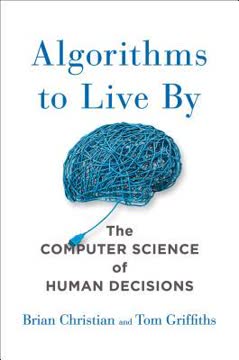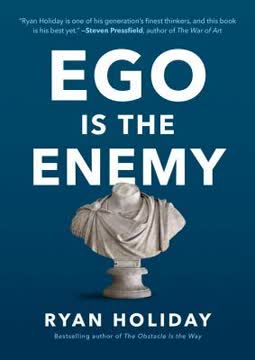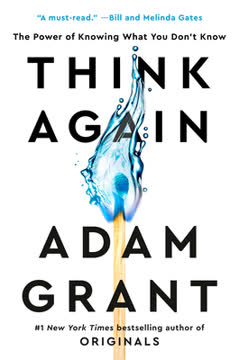نکات کلیدی
1. تسلط بر منطقه: ارتقاء عملکرد پوکر شما
منطقه حالتی از عملکرد ذهنی بالا، آگاهی و تمرکز است که به بازیکنان پوکر اجازه میدهد در بالاترین سطح ممکن بازی کنند.
درک منطقه. منطقه در پوکر با تصمیمگیری بدون تلاش، آگاهی بالا و حس جریان مشخص میشود. بازیکنان در منطقه تجربه میکنند:
- تصمیمگیری خودکار و شهودی
- رفتار آرام و صبورانه
- تمرکز شدید بر اجرا، نه نتایج
- تغییر درک زمان
بهطور مداوم به منطقه برسید. برای رسیدن به منطقه بیشتر:
- یک پروفایل منطقه ایجاد کنید تا حالت ایدهآل خود را درک کنید
- یک روال پیش از بازی شامل گرم کردن و تعیین هدف توسعه دهید
- تمرین کنید که وقتی از منطقه خارج میشوید، آن را تشخیص دهید
- از تکنیکهایی مانند تنفس عمیق و یادآوریهای استراتژیک برای بازگشت به منطقه استفاده کنید
غلبه بر موانع منطقه. مشکلات رایج که مانع عملکرد در منطقه میشوند شامل:
- مشکلات بازی ذهنی (عصبانیت، ترس، اعتماد به نفس بیش از حد)
- خستگی و مدیریت نادرست انرژی
- افکار مزاحم درباره گذشته یا آینده
- کمبود چالش یا تغییرات در دینامیک میز
2. فرآیند یادگیری خود را درک و بهینهسازی کنید
شما واقعاً چیزی را درک نمیکنید مگر اینکه بتوانید آن را برای مادربزرگتان توضیح دهید.
مراحل یادگیری را درک کنید. مهارتهای پوکر از چهار مرحله عبور میکنند:
- ناآگاهی ناخودآگاه (بیاطلاعی از ضعف)
- ناآگاهی خودآگاه (آگاهی اما ناتوانی در اصلاح)
- آگاهی خودآگاه (قابل اعمال با تلاش)
- آگاهی ناخودآگاه (اعمال خودکار)
تقویت کسب مهارت. برای بهبود یادگیری خود:
- از یک دفترچه بازی A برای ثبت بینشها استفاده کنید
- بر بهبود بازی C خود (بزرگترین ضعفها) تمرکز کنید
- بازخورد متنوعی (نتایج، احساسات، ریاضیات، نظرات دیگران) جستجو کنید
- استراحت مناسب برای تثبیت مهارتها را در نظر بگیرید
اجتناب از اشتباهات یادگیری. اشتباهات رایج که باید مراقب آنها باشید:
- توقف به دلیل کمبود چالش
- فرض زودهنگام تسلط بر یک مهارت
- تلاش برای یادگیری فعال در حین بازی
- مصرف بیش از حد اطلاعات بدون کاربرد
3. مهارتهای تصمیمگیری خود را برای بازی بهتر پوکر تقویت کنید
شهود یک احساس قوی، حس یا فکر درباره تصمیم درست در یک دست است که بر اساس دانش جدید و موجود، به ویژه شایستگی نامحسوس—دانش جدیدی که هنوز نمیتوانید توضیح دهید، است.
درک اجزای تصمیمگیری. تصمیمات پوکر شامل سه نوع دانش هستند:
- شهود: واکنشهای ناخودآگاه بر اساس تجربه
- تفکر: تحلیل آگاهانه از وضعیت
- غریزه: پاسخهای عمیقاً ریشهدار و خودکار
بهینهسازی فرآیند خود. برای بهبود تصمیمگیری:
- یک روال ثابت برای بررسی عوامل در یک دست توسعه دهید
- فرآیند تصمیمگیری خود را دور از میز تمرین کنید
- یاد بگیرید که تعصبات رایج (مثلاً تعصب تأیید) را تشخیص داده و بر آنها غلبه کنید
مدیریت محدودیتهای ذهنی. آگاه باشید از:
- محدودیتهای حافظه کاری (5-9 قطعه اطلاعات بهطور همزمان)
- تأثیر احساسات بر کیفیت تصمیمگیری
- خطر بیشفکری یا "فلج شدن با تحلیل"
4. تمرکز خود را برای کسب برتری تقویت کنید
سطح شوکآوری از حواسپرتی در میان بازیکنان آنلاین و زنده وجود دارد.
درک اجزای تمرکز. تمرکز شامل:
- توجه: جهت تمرکز
- تمرکز: شدت تمرکز
بهبود کیفیت تمرکز. استراتژیهایی برای تقویت تمرکز:
- بهطور منظم دامنه تمرکز خود را ارزیابی کنید (بهترین تا بدترین)
- از منطق تزریقی یا اهداف برای بازگشت به تمرکز هنگام حواسپرتی استفاده کنید
- تمرین مدیتیشن برای افزایش توجه پایدار
- حواسپرتیهای محیطی را قبل از بازی به حداقل برسانید
مقابله با قاتلان تمرکز. به مسائل رایج بپردازید:
- حواسپرتی: محرکها و نیازهای زیرین را شناسایی کنید
- خستگی: چالشهای جدید در بازی پیدا کنید
- فرسودگی: علائم را بشناسید و زمان بازیابی مناسب را فراهم کنید
5. اهداف مؤثری برای موفقیت در پوکر تعیین کنید
اهداف مسیری و مقصدی برای همه کارهایی که در میز و خارج از آن انجام میدهید فراهم میکنند.
تعادل در انواع اهداف. هر دو را تعیین کنید:
- اهداف نتایج (مثلاً برنده شدن $X، رسیدن به Y سطح)
- اهداف فرآیند (مثلاً بهبود بازی پس از فلاپ، کاهش عصبانیت)
ایجاد اهداف قدرتمند. تعیین هدف مؤثر شامل:
- تعریف نقاط پایان واضح
- تعیین زمانبندیهای واقعبینانه
- پیگیری پیشرفت بهطور منظم
- شناسایی موانع احتمالی از پیش
اجتناب از اشتباهات هدفگذاری. مراقب باشید از:
- اهداف متضاد (مثلاً خواستن برنده شدن در مقابل اجتناب از خجالت)
- انتظارات غیرواقعبینانه بر اساس دستاوردهای دیگران
- تمرکز صرف بر نتایج بدون در نظر گرفتن فرآیند
6. خودانضباطی را برای بهبود مداوم پرورش دهید
اگر در حال کار نیستید، فعالانه عقب میافتید.
مسئولیتپذیری. بپذیرید که موفقیت شما کاملاً به شما بستگی دارد:
- از سرزنش واریانس، حریفان یا عوامل خارجی دست بردارید
- مناطقی را شناسایی کنید که میتوانید کنترل بیشتری اعمال کنید
توسعه اراده. خودانضباطی را به عنوان یک منبع محدود در نظر بگیرید:
- عادات خوب ایجاد کنید تا اراده را حفظ کنید
- ظرفیت خود را از طریق تلاش مداوم بهتدریج افزایش دهید
تقویت اخلاق کاری. رویکرد حرفهای ایجاد کنید:
- الگوهایی با اخلاق کاری قوی شناسایی کنید
- ارتباطات منفی با "کار" را به چالش بکشید
- اولویتهای واضحی برای هدایت تلاشهای خود تعیین کنید
7. مدیریت زمان و انرژی برای عملکرد اوج
پوکر یک بازی بلندمدت است و من باید بفهمم چگونه سود خود را برای کل سال، نه فقط یک شب، به حداکثر برسانم.
ایجاد یک برنامه تطبیقی. تعادل بین ساختار و انعطافپذیری:
- زمان برای بازی، مطالعه، استراحت و زندگی شخصی تخصیص دهید
- انتخاب بازی بر اساس شرایط فعلی را مجاز کنید
- زمانهای پربار خود را شناسایی و استفاده کنید
بهینهسازی مدیریت انرژی. حفظ عملکرد اوج:
- برنامه پوکر خود را حول رویدادهای مهم ("گرند اسلمهای پوکر") برنامهریزی کنید
- استراحتهای منظم برای جلوگیری از فرسودگی بگیرید
- روالهای پیش از بازی و پس از بازی را توسعه دهید
حذف اتلافکنندههای زمان. افزایش بهرهوری:
- نحوه گذراندن زمان خود را برای یک هفته پیگیری کنید
- میوههای کمارتفاع برای بهبود آسان را شناسایی کنید
- تغییرات کوچک و قابل مدیریت برای ایجاد حرکت ایجاد کنید
آخرین بهروزرسانی::
FAQ
What's "The Mental Game of Poker 2" about?
- Focus on mental game: "The Mental Game of Poker 2" by Jared Tendler is centered on improving the mental aspects of poker, which are often overlooked compared to tactical skills.
- Consistent peak performance: The book provides strategies to help players consistently reach their mental peak, known as "the zone," where decision-making and focus are optimized.
- Comprehensive approach: It covers various mental game issues, including focus, decision-making, learning, and self-discipline, offering a holistic approach to improving poker performance.
Why should I read "The Mental Game of Poker 2"?
- Enhance mental endurance: The book offers proven strategies to increase mental endurance, crucial for long poker sessions.
- Improve poker skills: It provides insights into refining poker skills by addressing mental game issues that hinder performance.
- Achieve consistency: By learning to play in the zone consistently, players can maximize their edge and improve their overall game.
What are the key takeaways of "The Mental Game of Poker 2"?
- Zone mastery: Understanding and consistently reaching the zone is crucial for peak performance.
- Learning efficiency: The book emphasizes the importance of structured learning and backfilling knowledge to solidify skills.
- Decision-making process: It highlights the need to align decision-making with tactical knowledge for better outcomes.
How does Jared Tendler define "the zone" in poker?
- Heightened mental state: The zone is a state of heightened mental functioning, awareness, and concentration that allows players to perform at their highest level.
- Predictable access: The book explains that reaching the zone is predictable and can be achieved consistently with the right approach.
- Key components: Energy, learning, and the data stream are essential facets of the zone, and understanding them is crucial for consistent access.
What strategies does "The Mental Game of Poker 2" offer for improving focus?
- Attention and concentration: The book distinguishes between attention (direction of focus) and concentration (amount of focus) and offers strategies to improve both.
- Minimize distractions: It suggests minimizing distractions by creating an environment conducive to focus, such as closing unnecessary applications and setting clear goals.
- Mental endurance: Increasing mental endurance through practice and pushing beyond comfort zones is emphasized as a way to sustain focus longer.
How does "The Mental Game of Poker 2" suggest players improve their decision-making?
- Three types of knowledge: Decision-making involves intuition, thinking, and instinct, and players should understand how to utilize each effectively.
- Align with knowledge: The book stresses the importance of aligning decision-making processes with the level of tactical knowledge accessible at the time.
- Practice and repetition: Regular practice and repetition, including hand history reviews, are recommended to refine decision-making skills.
What is the "A- to C-game analysis" in "The Mental Game of Poker 2"?
- Range assessment: This analysis helps players assess the range of their performance from their best (A-game) to their worst (C-game).
- Identify weaknesses: By identifying weaknesses and patterns in their game, players can focus on improving their C-game to elevate overall performance.
- Continuous improvement: The analysis is a tool for tracking progress and ensuring consistent improvement over time.
How does "The Mental Game of Poker 2" address learning in poker?
- Stages of learning: The book outlines the stages of learning, from unconscious incompetence to unconscious competence, to help players understand their progress.
- Backfilling knowledge: It emphasizes the importance of backfilling knowledge to solidify concepts learned from others and ensure a strong foundation.
- Deliberate practice: The concept of deliberate practice is highlighted as a way to challenge oneself and accelerate learning.
What role do goals play in "The Mental Game of Poker 2"?
- Results and process goals: The book differentiates between results-oriented goals and process goals, emphasizing the importance of setting both.
- Align with potential: It encourages players to set goals that align with their potential and to regularly reassess and adjust them as they improve.
- Plan for obstacles: Anticipating and planning for obstacles is crucial for achieving goals and maintaining motivation.
How does "The Mental Game of Poker 2" suggest players increase their mental endurance?
- Steady increase: The book advises a steady increase in volume, whether in terms of tables or hours, to gradually build mental endurance.
- Push beyond comfort: Players are encouraged to push beyond their comfort zones to increase their capacity for grinding.
- Rest and recovery: Proper rest and recovery, including cool-downs and time away from poker, are essential for maintaining endurance.
What are some of the best quotes from "The Mental Game of Poker 2" and what do they mean?
- "Opportunity is missed by most people because it’s dressed in overalls and looks like work." This quote by Thomas Edison emphasizes the importance of hard work and effort in achieving success.
- "There is no traffic on the extra mile." Zig Ziglar's quote highlights the value of going above and beyond, as few people are willing to put in the extra effort required for excellence.
- "If people knew how hard I worked to achieve my mastery, it wouldn’t seem so wonderful after all." Michelangelo's words remind readers that mastery and success are the results of dedication and hard work, not just talent.
How does "The Mental Game of Poker 2" help players deal with tilt?
- Understanding triggers: The book helps players identify the triggers and signs of tilt, allowing them to address the root causes.
- Injecting logic: It provides strategies for injecting logic into emotional situations to regain control and prevent tilt from affecting performance.
- Long-term solutions: By working on mental game issues consistently, players can reduce the frequency and intensity of tilt over time.
نقد و بررسی
کتاب بازی ذهنی پوکر 2 نقدهای متفاوتی دریافت کرده است و بهطور کلی امتیاز 4.23 از 5 را کسب کرده است. برخی از خوانندگان از توصیههای عملی، بینشهای روانشناختی و کاربرد آن فراتر از پوکر تمجید میکنند. آنها کتاب را بهخوبی نوشته شده و مفید برای بهبود تصمیمگیری و عملکرد میدانند. با این حال، منتقدان معتقدند که برخی مفاهیم فاقد پشتیبانی علمی هستند و به نظر میرسد متناقض باشند. با وجود انتقادات، بسیاری از خوانندگان از تمرکز کتاب بر آمادگی ذهنی، دستیابی به عملکرد اوج و پتانسیل آن برای بهبود جنبههای مختلف زندگی فراتر از پوکر قدردانی میکنند.
Similar Books















